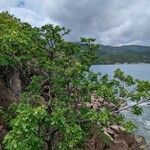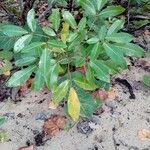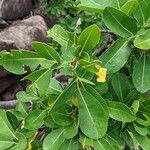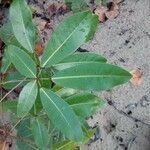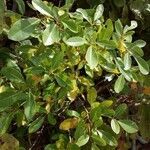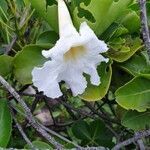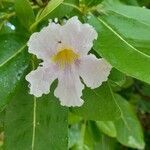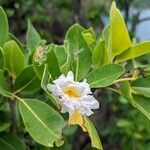A large shrub or tree. It is larger than Tabebuia heterophylla. The leaves are usually simple. Occasionally they have 3 leaflets. The leaf blades are oval and 20 cm long by 12 cm wide. The flowers are pale pink or white. They are large. They are 5-8 cm long. There can be 1 or several in a cluster at the ends of the branches. The fruit is a pod like capsule 10-20 cm long by 15 mm wide. It splits open. There are many winged seeds.
Shrub or small tree. Leaves 1-5-foliolate, leaflets elliptic to elliptic oblong or obovate, obtuse. Inflorescence few-flowered, often reduced to 1 or 2 flowers. Corolla pinkish lavender to almost white, the throat opening yellow.
